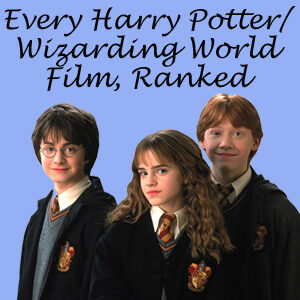In the 1983 documentary “From Star Wars to Jedi: The Making of a Saga,” George Lucas talks about how a lot of movies like to show off the work of the construction crew on screen. But he prefers to spend just enough time on an establishing shot that viewers know what they are seeing; he doesn’t like to show off.
Since I loved the “Star Wars” films as a kid, I ate up everything Lucas had to say about them and I never questioned his logic on that point, even though I was paradoxically impressed by the behind-the-scenes B-roll of the “Return of the Jedi” sail barge being built.
After watching “Episode I: The Phantom Menace” (1999) in 3D, the first of a six-year annual rollout of the saga in this format, I’m starting to question Lucas’ stance. The film includes a beautiful vertigo-inducing shot from above a floating landing platform on Coruscant. Around the sides, you can see the depths are seemingly endless. I wanted more shots like this.
“Phantom Menace” is such a beautifully designed movie (love it or hate it, it unquestionably opened up a previously closed-off era of “Star Wars” that is now being richly mined in “The Clone Wars,” one of TV’s best series), yet it also has a lot of scenes of people sitting or standing stiffly and talking. While Lucas’ quick-cutting philosophy works for the action-oriented original trilogy, I feel like the political-oriented Episode I could’ve breathed more. Maybe Lucas should’ve held establishing shots of Theed or Tatooine or Coruscant just a beat longer, especially for this 3D release.
As it stands, the 3D won’t change your opinion of “Phantom Menace”; it’s still for fans only. The film wasn’t designed with 3D in mind, so it generally just adds depth of field without fundamentally altering the viewing experience. The podrace is shot mostly from the side; if Lucas had been thinking of 3D, he might’ve designed more “coming at the camera” shots. The only time I noticed an object coming at me was when a Gungan boomer bounces toward the battle droids in the Naboo battle.
This is the same cut of the film you’ll find on the 2011 Blu-ray, but it’s the first theatrical release since 1999, so it’s fun to see it on the big screen again. Although Lucas gets a lot of guff about alterations to the “Star Wars” films through the years, the digital Yoda (first seen in a clip from the “Star Wars” orchestra tour a couple years ago) is among the best. It looks much better than the 1999 puppet, and even a bit better than the Yoda in Episodes II and III.
It’s fun to watch the movie now, having just read the novel “Darth Plagueis” (the timeline of which overlaps with the events of Episode I) and knowing that Darth Maul will soon be resurrected on “The Clone Wars.” It gives a little extra punch to scenes with Darths Sidious and Maul.

It’s also kind fun to read the reviews by movie critics who aren’t big fans and therefore are revisiting the film for the first time in 13 years. I was happy for Jake Lloyd when Owen Gleiberman singled him out for praise in his recent Entertainment Weekly review. I agree with him completely: Lloyd does a great job launching the character of the Boy Who Will Be Vader, and he never really got credit for that. Likewise, Ahmed Best adds a nice touch of innocence as Jar Jar Binks, and it’s a shame that he was vilified when the movie came out (although the vitriol has simmered down since then).
I’m not so naïve that I don’t notice the faults of the movie, but those lie with Lucas’ soap-opera staging and writing much more so than with the performances (which are strong throughout; Watto is my favorite character and Liam Neeson is the best traditional actor) and design (which is, as I noted, spectacular). In the back of my mind, I’ll always wonder what the prequels would be like if Lucas had handed off the writing and directing reins, especially in light of how good “The Clone Wars” is (The series is Lucas’ vision in a broad sense, but he doesn’t do any writing or directing of episodes).
But I’m not a hater: “The Phantom Menace” opened up a whole new world of “Star Wars” stories in novels, comics and TV. And that’s where the saga really gains an extra dimension.

